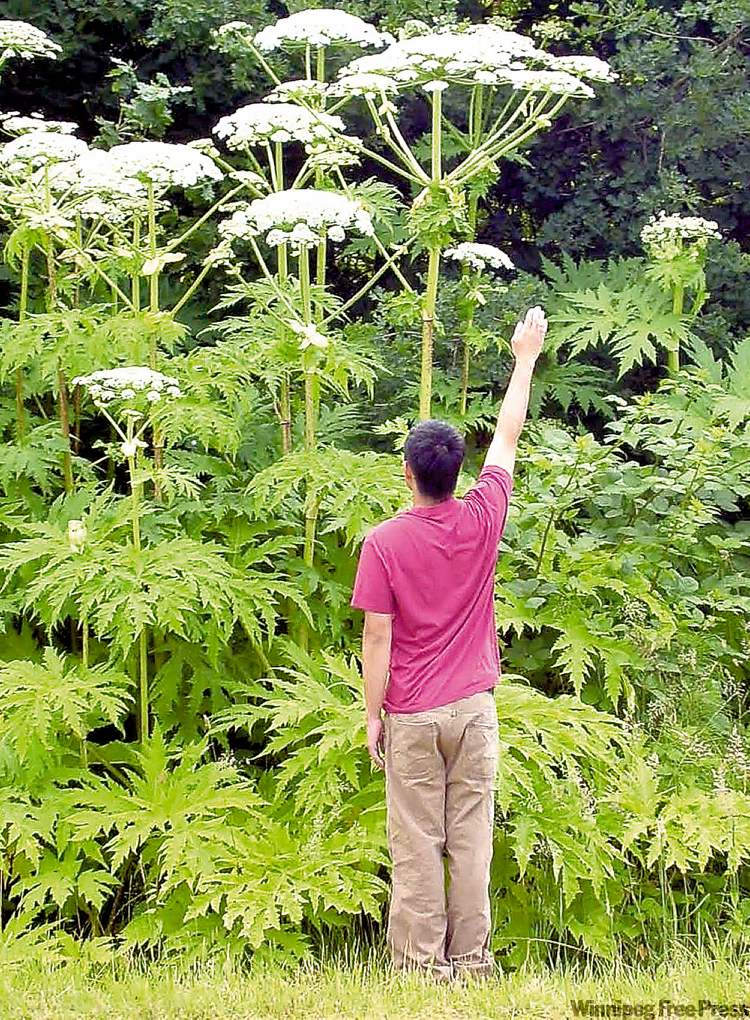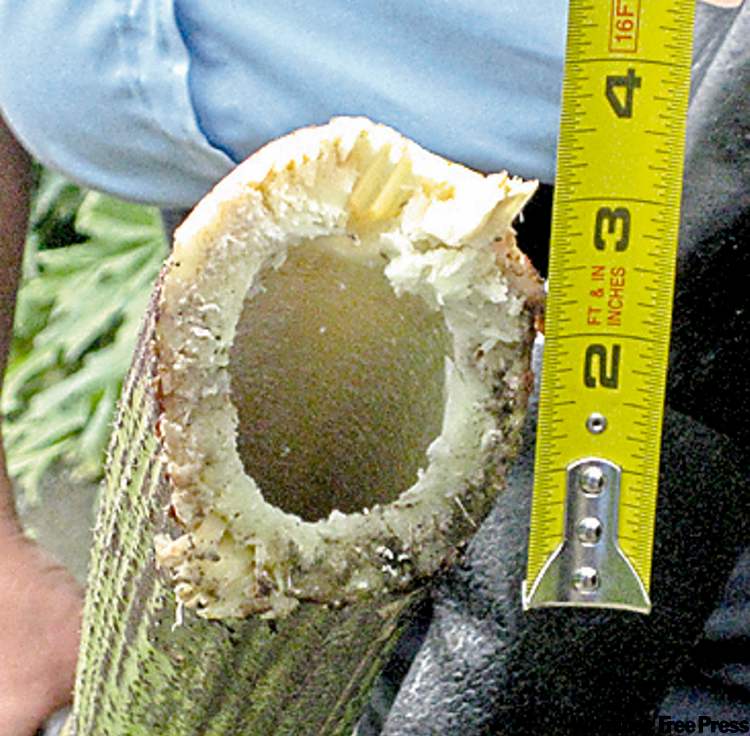Nasty, poisonous plant causes burns, blindness
Aggressive species could spread across Canada
Advertisement
Read this article for free:
or
Already have an account? Log in here »
To continue reading, please subscribe:
Monthly Digital Subscription
$1 per week for 24 weeks*
- Enjoy unlimited reading on winnipegfreepress.com
- Read the E-Edition, our digital replica newspaper
- Access News Break, our award-winning app
- Play interactive puzzles
*Billed as $4.00 plus GST every four weeks. After 24 weeks, price increases to the regular rate of $19.00 plus GST every four weeks. Offer available to new and qualified returning subscribers only. Cancel any time.
Monthly Digital Subscription
$4.75/week*
- Enjoy unlimited reading on winnipegfreepress.com
- Read the E-Edition, our digital replica newspaper
- Access News Break, our award-winning app
- Play interactive puzzles
*Billed as $19 plus GST every four weeks. Cancel any time.
To continue reading, please subscribe:
Add Free Press access to your Brandon Sun subscription for only an additional
$1 for the first 4 weeks*
*Your next subscription payment will increase by $1.00 and you will be charged $16.99 plus GST for four weeks. After four weeks, your payment will increase to $23.99 plus GST every four weeks.
Read unlimited articles for free today:
or
Already have an account? Log in here »
Hey there, time traveller!
This article was published 27/07/2010 (5574 days ago), so information in it may no longer be current.
It sounds like something out of a horror movie, but it’s real, it’s alive, and it’s been spotted in southwestern Ontario, British Columbia, Quebec and the East Coast.
Could giant hogweed, a nasty and highly toxic plant that can cause chemical-like burns and permanent blindness, be on its way here?
So far, there have been no confirmed giant hogweed plants in Manitoba, said Invasive Species Council of Manitoba co-ordinator Cheryl Heming. That doesn’t mean there won’t be. "There is a possibility it could come here, and that’s why we’re on the alert," Heming said on Monday. "The usual format for invasive species is, a lot will come into southern Ontario or southern B.C., and given the ability to spread these species would come here afterwards."

The towering plant — stalks can grow up to five metres tall — originally hails from the Caucasus region and Central Asia. Over 100 years ago, it was brought to Europe and North America by well-meaning gardeners interested in its umbrellas of small white flowers. But the aggressive species has since run rampant in Great Britain and now threatens to spread across Canada.
Here’s why it’s bad: the plant’s watery sap, loaded with toxic chemicals called furocoumarins, binds to human skin in sunlight, causing itching, oozing pustules and black and purple scars that can take years to fade. If even a teensy amount of sap ends up in the eye, it can burn the cornea, causing temporary or permanent blindness.
To make matters worse, the furocoumarins in the sap can also cause cancer and birth defects. And that sap is found all over the plant, whose hollow reddish stalks are often sought by children as peashooters or play telescopes. And the plant loves moist areas with turned-up soil, such as ditches, roadsides and abandoned urban lots.
Since national media outlets began broadcasting news about the giant hogweed’s spread across Canada last week, the ISCM has received around 10 calls from people who thought they had spotted hogweed. Investigators were sent out to check but all the sightings turned out to be of a similar but much smaller species, cow parsnip, which is native to Manitoba. That plant is also toxic, though Heming notes that the risk of the public coming into contact with it is small.
Still, Heming urges the public to keep in touch with ISCM investigators. Last week the group posted a giant hogweed alert on its website, invasivespeciesmanitoba.com, to help spread the word. And if you see a plant that looks suspiciously like giant hogweed, don’t touch it: call the professionals. "It would be great if people reported species they’re concerned about, because then we can mobilize. That gives us an ability to do something about it," she said, noting the ISCM is readying a rapid-response program this year. "Our belief is that we like to stop the serious invasive species before they become widespread. That’s what early detection and rapid response is about."
Still, it won’t be easy to stamp out the plant’s spread. "The only real success stories in controlling (invasive species) is controlling them at the point they are discovered," said University of Manitoba environment professor David Walker, who studies their impact on ecosystems. "Once they get a foothold, it’s nearly impossible."

It’s still not known if or when giant hogweed will flourish in Manitoba as it’s difficult to predict how a species will take to an ecosystem until it happens, Walker said. But he notes that if it does, it won’t be the first time a once-ornamental plant caused ecological, economic or health havoc. Dandelions and the dreaded weed purple loosestrife are also foreign plants brought over for gardens, he said.
"Most of the introductions we’ve had have been on purpose," Walker said. "People always want the newest flower in their garden. And a plant that may not be particularly invasive where it originally evolved, can become incredibly invasive… or not."
melissa.martin@freepress.mb.ca

Melissa Martin
Reporter-at-large
Melissa Martin reports and opines for the Winnipeg Free Press.
Every piece of reporting Melissa produces is reviewed by an editing team before it is posted online or published in print — part of the Free Press‘s tradition, since 1872, of producing reliable independent journalism. Read more about Free Press’s history and mandate, and learn how our newsroom operates.
Our newsroom depends on a growing audience of readers to power our journalism. If you are not a paid reader, please consider becoming a subscriber.
Our newsroom depends on its audience of readers to power our journalism. Thank you for your support.

